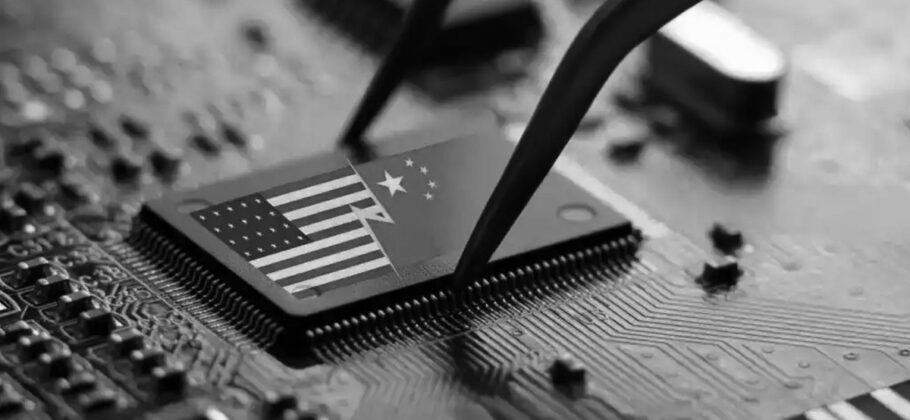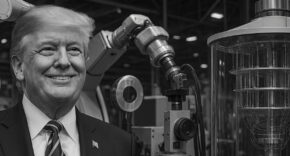Nvidia designs advanced graphics processing units that power the modern artificial intelligence boom. These data center chips train and run large models, while Nvidia’s software ecosystem helps developers squeeze more performance from the hardware. That combination made Nvidia the default choice for Chinese cloud and internet platforms that need massive computing power for search, recommendation engines, and generative AI.
What China has done to Nvidia
Chinese regulators have intensified scrutiny of Nvidia’s presence in the mainland. Officials labeled part of its business a monopoly and extended a probe tied to earlier merger conditions. Reports also describe instructions for major tech companies to stop testing and buying Nvidia’s newest China-specific GPUs. Nvidia CEO Jensen Huang said he was “disappointed” by the reported ban and added, “we can only be in service of a market if the country wants us to be.” An Nvidia spokesperson admitted the competitive landscape has shifted, saying, “The competition has undeniably arrived and is gaining momentum,” and that “Customers will choose the best technology stack for running the world’s most popular commercial applications and open-source models.”
Beijing is banning Nvidia
Beijing is pushing for self-reliance in critical technologies and wants to reduce dependence on U.S. suppliers. Regulators argue that domestic accelerators can now match restricted Nvidia parts. The government has urged large platforms to adopt local chips and software frameworks. Analysts see a coordinated move toward homegrown silicon, huge clusters built from many domestic processors, and an ecosystem that can evolve regardless of foreign export rules. Commenting on the broader standoff, Michael Ashley Schulman called Nvidia a pawn in a “digital Cold War,” while Huawei’s rotating chairman Eric Xu underlined China’s approach by saying, “Computing power has and will continue to be the key for AI.”
China’s top competitors to Nvidia
Huawei
Huawei is the most aggressive challenger. It builds Ascend AI chips and complete computing systems around them. The company plans new Ascend versions through 2028 and says each generation will double compute. Its Atlas design links vast numbers of chips, scaling from supernodes to superpods to superclusters in order to work around restrictions by using extreme parallelism. Huawei announced an Atlas 950 supernode that supports 8,192 Ascend chips and a SuperCluster with more than 500,000 chips. A 960-class node is planned to support 15,488 chips per node and clusters exceeding 1 million chips. In a speech, Eric Xu claimed the forthcoming Atlas 950 supernode would deliver 6.7 times more computing power than Nvidia’s NVL144 slated for next year, and he predicted Huawei would “be ahead on all fronts” compared with another Nvidia system due in 2027. Research cited this year found Huawei’s CloudMatrix could outperform Nvidia’s approach by using far more chips in parallel. Huawei says hundreds of Atlas 900 A3 supernodes are already deployed across industries.
Cambricon Technologies
Cambricon is a dedicated AI chipmaker founded in 2016. It designs processors for deep learning in data centers and at the edge, with customers in healthcare, finance, and autonomous driving. The company recently reported a surge in revenue, reflecting fast-rising demand for AI hardware as Chinese buyers pivot away from U.S. chips. Cambricon’s strategy stresses broad product coverage, heavy research and development, and partnerships that extend reach and accelerate innovation. As Beijing encourages local platforms to replace imported accelerators, Cambricon stands to capture a greater share of workloads that previously defaulted to Nvidia. Its chips focus on common AI tasks and can be slotted into domestic cloud services that also run Chinese software frameworks. The company’s momentum signals a changing market in which many buyers seek “good enough” local performance today with the expectation that each generation will improve as volumes and experience grow.
Baidu’s Kunlun
Baidu designs Kunlun accelerators for training and inference in its own cloud. The aim is to control cost, supply, and roadmaps while access to foreign GPUs remains uncertain. Kunlun supports Baidu’s core AI services and gives the company flexibility as rules change. Chinese authorities have convened domestic teams, including Baidu’s chip group, to compare capabilities against Nvidia’s restricted parts and to speed adoption of local solutions. While public technical details are limited in the material provided here, the strategic role is clear. Kunlun helps Baidu shift sensitive workloads onto in-house silicon that can be produced and upgraded inside China’s policy framework. It also allows Baidu to align with national goals that favor homegrown stacks. Over time, Baidu can tighten integration between Kunlun hardware and Chinese AI frameworks, which reduces reliance on foreign software ecosystems.
Alibaba T-Head
Alibaba’s T-Head unit builds AI inference chips tailored for its data centers and services. By designing its own processors, Alibaba keeps key workloads running even when foreign chips face new barriers. T-Head fits into a wider plan to assemble an end-to-end Chinese AI stack. Government messaging encourages large cloud firms to replace American technology where feasible, and T-Head gives Alibaba a path to do that at scale. The near-term goal is to handle most routine workloads with domestic parts that are considered comparable to restricted imports, then improve step by step. As software support grows, T-Head can expand beyond inference into heavier training tasks. This gradual approach allows Alibaba to hedge against policy shocks while building long-term capability inside its own cloud.
Tencent’s AI chip program
Tencent has been encouraged to develop internal AI hardware and software. Even partial in-house accelerators can shift significant volumes of inference and training off foreign GPUs because Tencent runs some of China’s largest platforms. Participation in government-led assessments helps Tencent validate performance against restricted Nvidia chips and coordinate adoption timelines with regulators. Fewer public details are available in the provided material, yet Tencent’s size means small design wins can move large workloads. As the company integrates domestic accelerators with Chinese AI frameworks, it lowers exposure to supply interruptions and aligns with policies that favor homegrown compute.
The threat to Nvidia and the U.S.
China has been a large market for AI chips. Policy-driven bans remove billions in potential sales and create a deeper risk. If Chinese platforms standardize on domestic silicon and software, Nvidia can be designed out of future systems in the world’s second-largest economy. Even if single chips lag Nvidia’s parts, Chinese vendors can link many processors together to reach target performance. An Nvidia spokesperson acknowledged the moment, saying, “The competition has undeniably arrived and is gaining momentum.” Investors and analysts warn that prolonged separation could erode Nvidia’s ecosystem edge in a key region.
Export rules keep China from acquiring top U.S. chips, but they also push Beijing to invest more in domestic hardware, software, and talent. Officials and commentators in China frame the situation as an opportunity to accelerate self-reliance. George Chen cautioned that Huawei’s ambition “cannot be underestimated,” even if some public claims may be overstated. If China covers most of its needs with local technology and iterates rapidly through scale, the United States could face a peer competitor in AI hardware rather than a dependent buyer. That would narrow the U.S. lead that has come from superior chips and ecosystems.
Industry voices describe a power struggle where policy shapes the market as much as performance. Nvidia’s Jensen Huang said he was “disappointed” by the reported ban and noted that the United States and China have “larger agendas to work out.” Jamie Meyers summed up the uncertainty from the investor side by saying companies need clarity on whether China even wants the chips and whether Washington will allow sales, and if so, how that would work. Huawei’s Eric Xu emphasized the centrality of scale by stating, “Computing power has and will continue to be the key for AI.” The debate is no longer only about faster processors. It is also about who controls supply, standards, and the software that runs on top.
China is not only blocking Nvidia. It is building an alternative at national scale. Huawei leads with Ascend-based superclusters, Cambricon is growing quickly across data center and edge markets, and in-house chips from Baidu, Alibaba, and Tencent are filling in the stack. For Nvidia and for U.S. policymakers, the challenge is balancing near-term security aims with the long-term risk of catalyzing a capable rival ecosystem. As one analyst put it, companies like Nvidia are navigating a “digital Cold War,” where access is set by politics as much as by technology.
FAM Editor: We have no doubt that China has already stolen the plans for anything that Nvidia has in production or on the drawing board. What they do not have is the access to markets that Nvidia has, which funds R&D and new designs. But with China pushing BRICS, and forming new coalitions, this may soon change.





